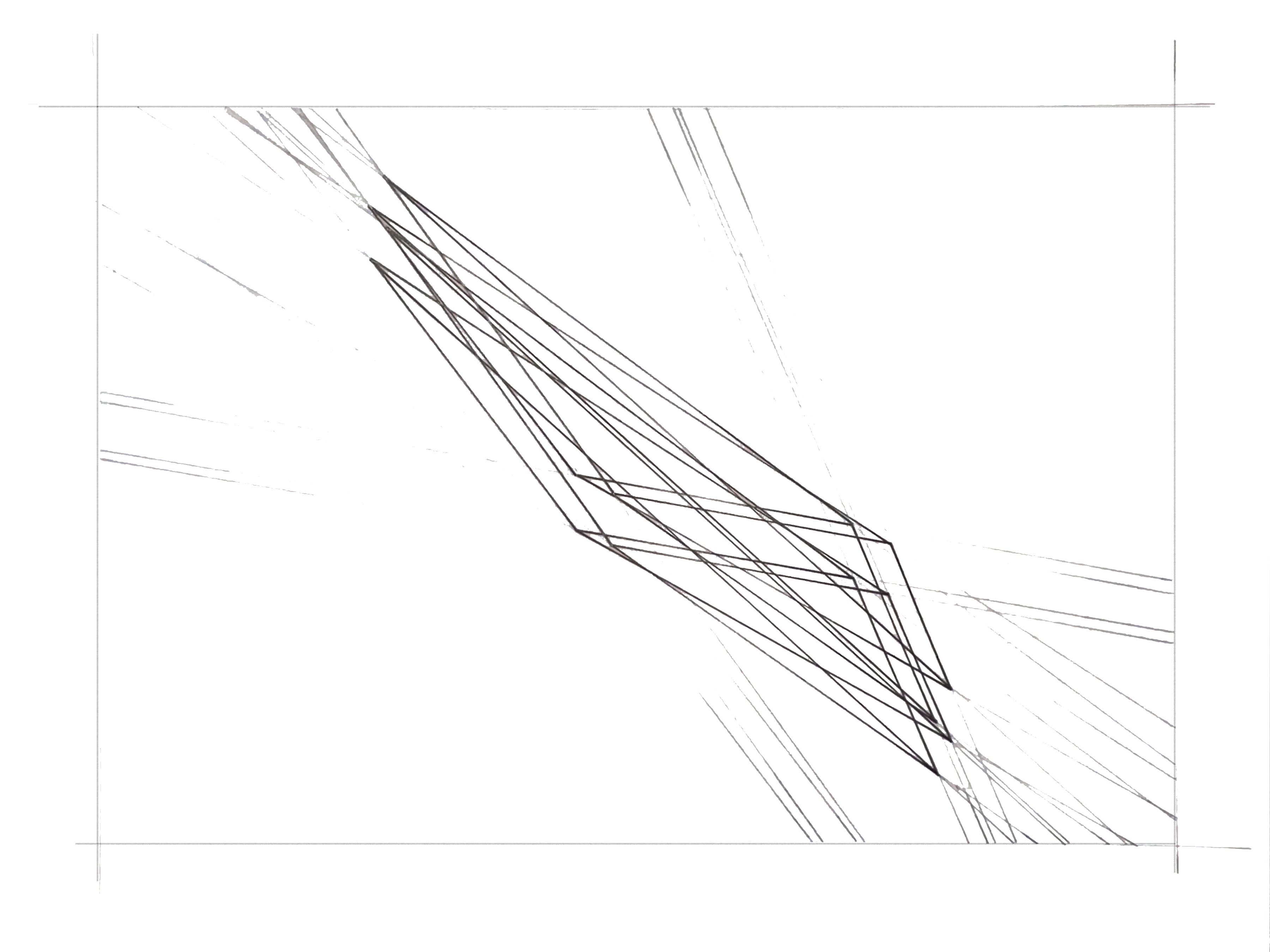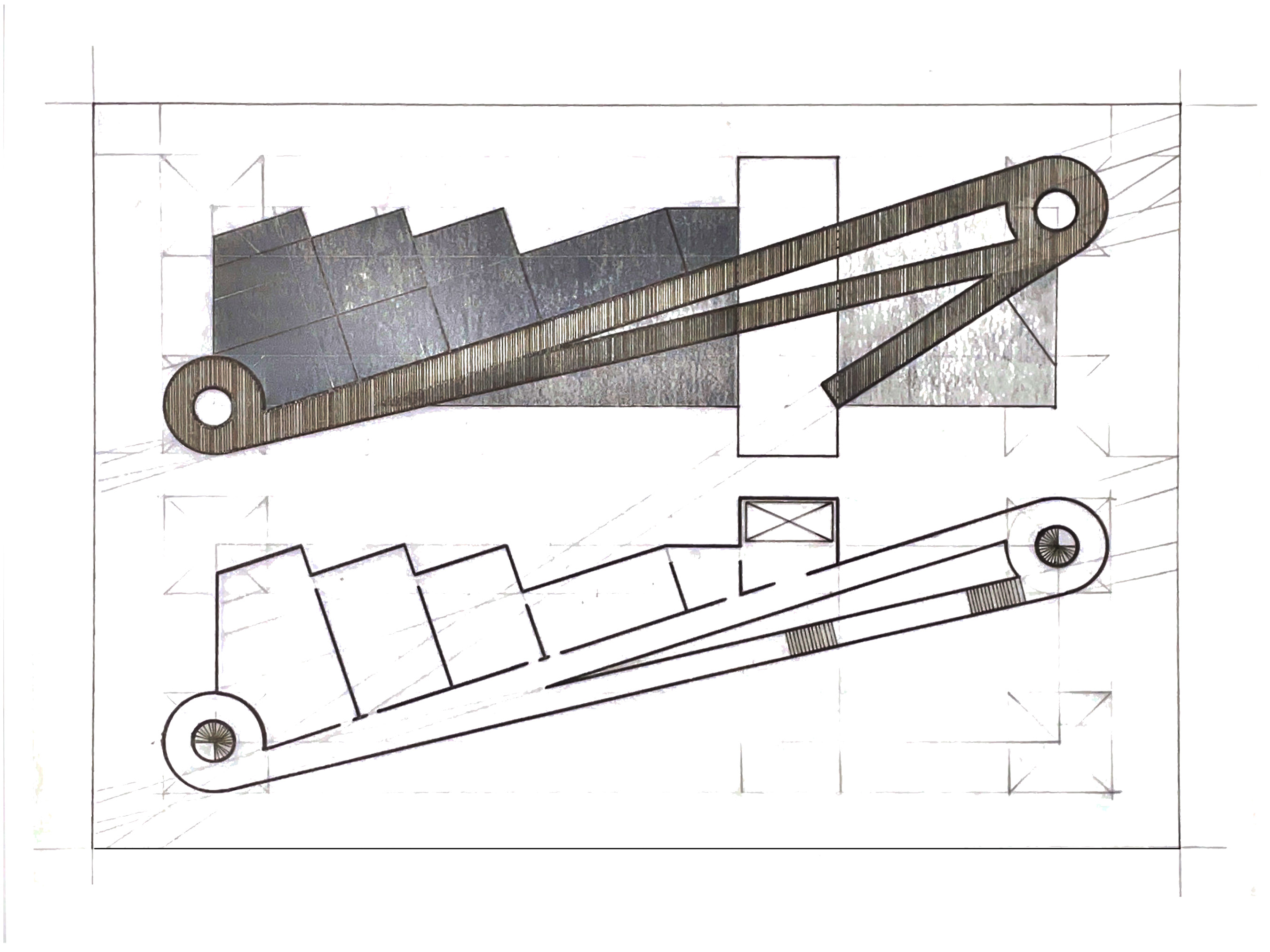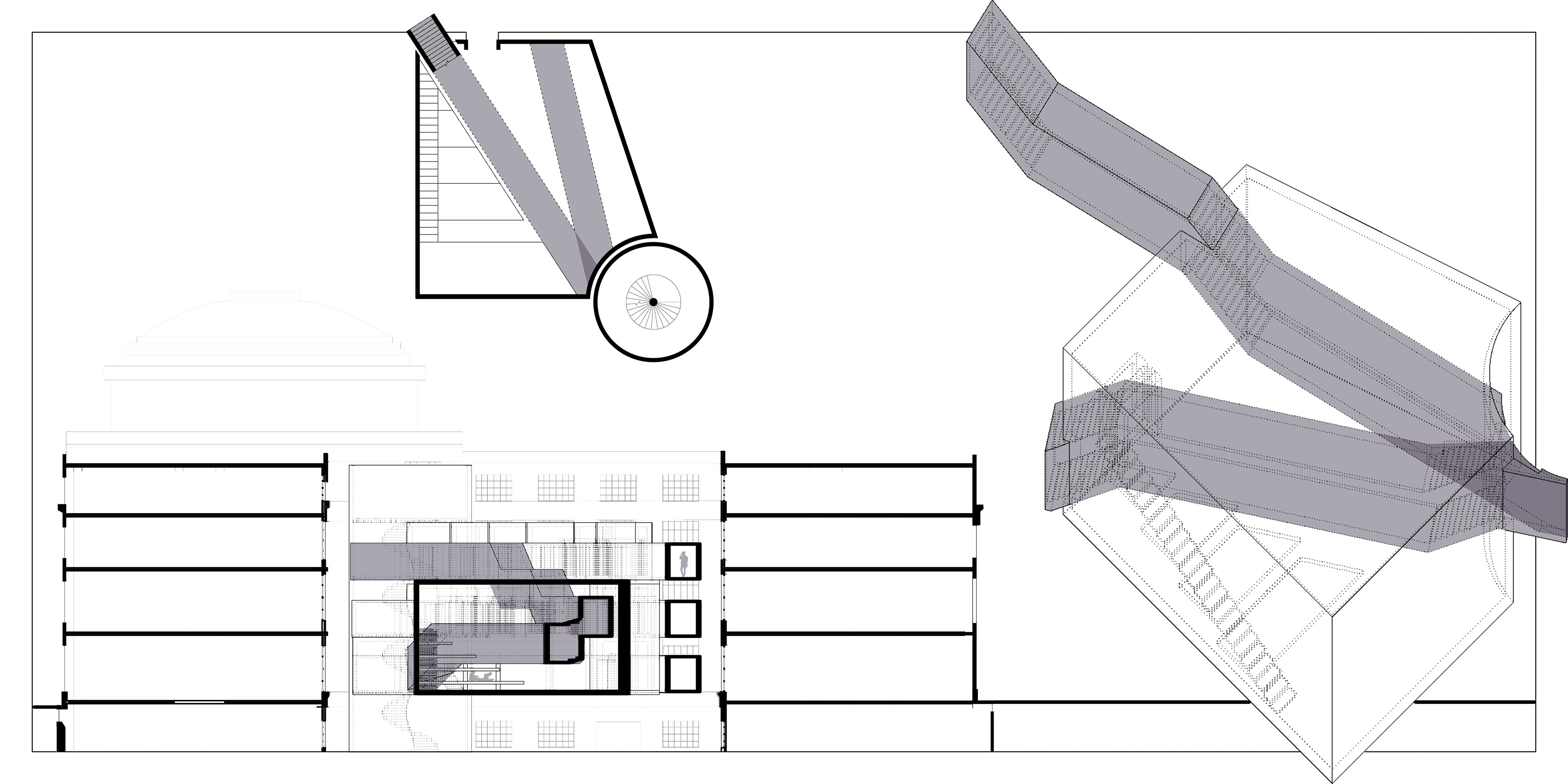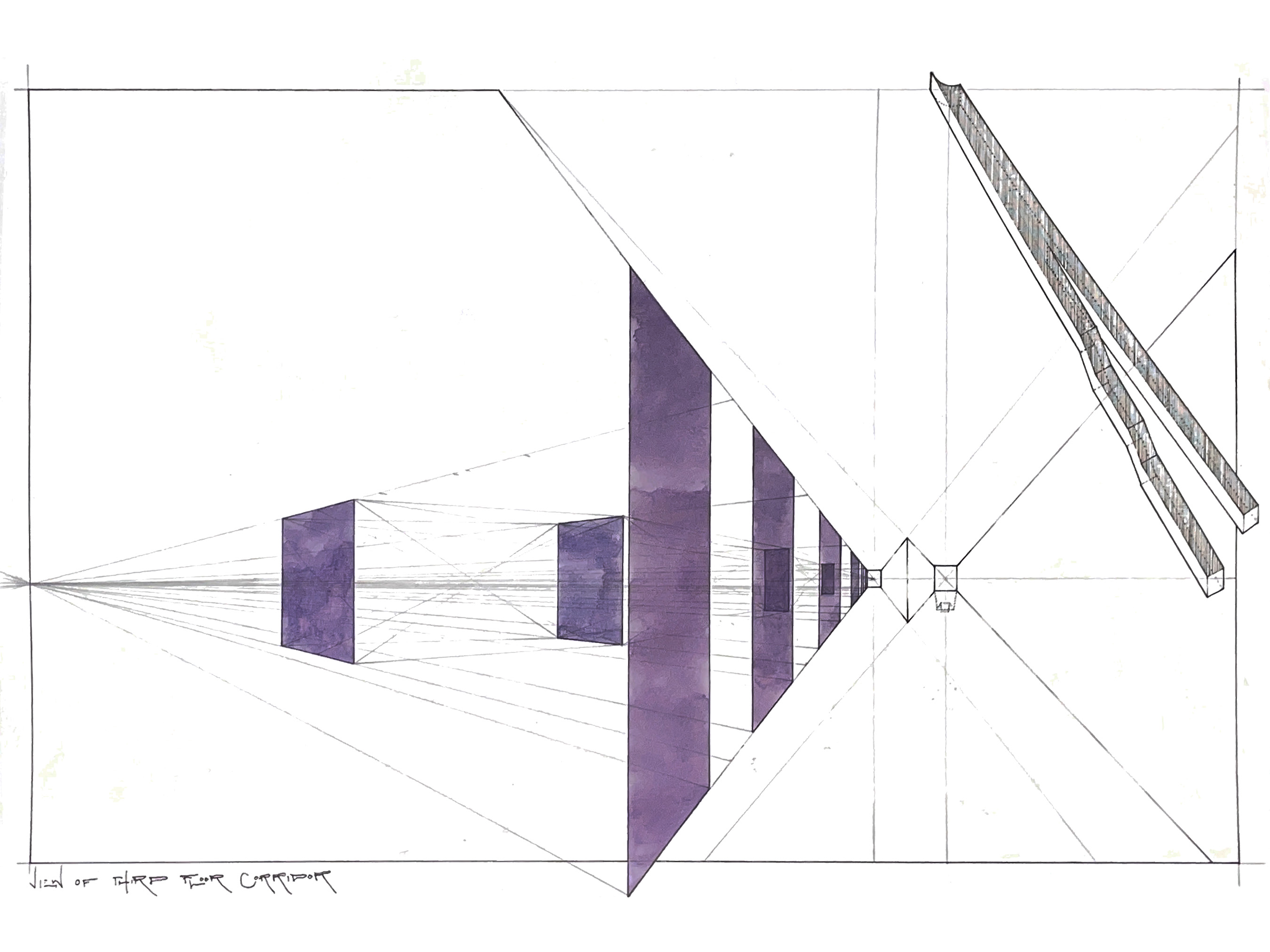representational reality
massachusetts institute of technology
fall 2022
studio professor | jeff landman
the prompt asked for a building that is a part and stands apart, within the context of an MIT courtyard enclosed by Buildings 1, 3, 5, and 7. taking the elongated hallways of MIT as a point of departure,
this building is apart of MIT in that it links the Mass. Ave lobby to secondary points of egress and auditoriums on the opposite corner of the courtyard. the entire building is inserted above the ground,
only connected to the courtyard walls so as to not disturb the parking spaces below.
the building is apart from MIT in its use of circulation as a method of segregation and oppression. in representational reality, corridors are recontextualized as datumnal vessels on an oblique axis.
required programs are accommodated as discrete boxes organized on this oblique, with the only sources of natural light coming from the gaskets that connect them. experientially, this creates an
extremely expansive conception of space wherein darkness is suffocating.
furthermore, use of the corridors is restricted to an as-needed basis for members of the MIT community, with the public only being granted visual access to their external forms. however, there is a museum and hall
reserved specifically for the public which is penetrated by the inaccessible objects of circulation. conversely, members of the MIT community have physical access through the circulation,
but no visual access to the grand public spaces.
in terms of representation, the main issues being explored by the project are the privilege of the eye in architecture and the problem of perception in philosophy.
by utilizing traditional linear perspective techniques in tandem with computer-generated rendering and imaging techniques,
a simulated experience of space is juxtaposed with an architect’s omniscient view of space.































